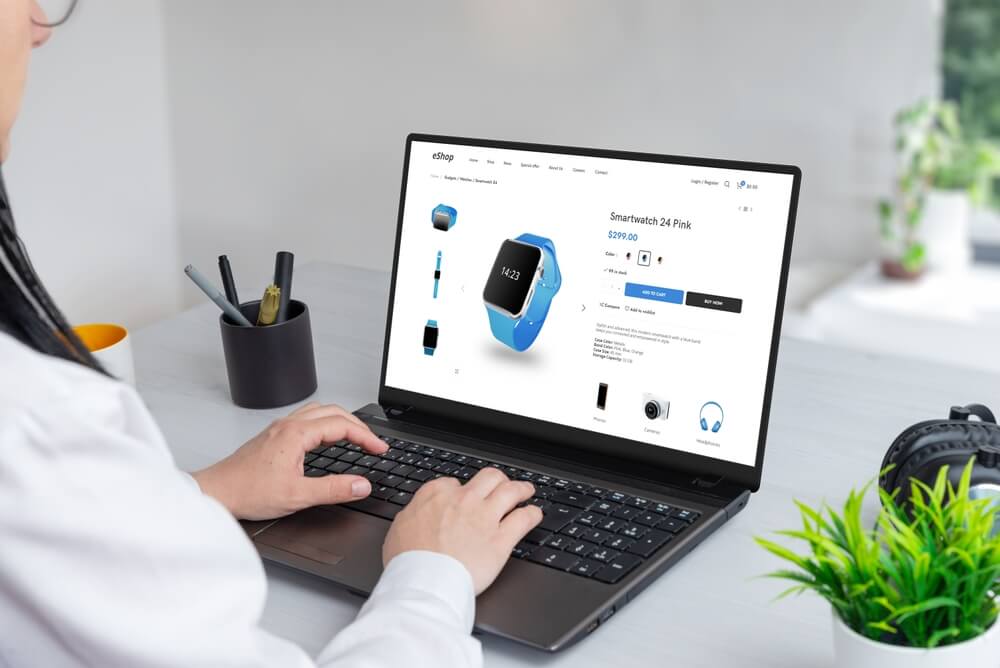
Recovering Abandoned Carts: Fractional CMO Tactics To Reclaim Lost Ecommerce Sales
Do you have a high cart abandonment rate? Although distressing, a good eCommerce fractional CMO can turn this problem into an excellent opportunity to increase your sales and even build a better brand.
This article gives you more ideas about the topic:
 Cart abandonment is when a customer places items in their online shopping cart but leaves the website without completing the purchase. Usually, it occurs when a visitor proceeds through the shopping journey but ultimately exits before checking out. The degree to which it happens is known as the cart abandonment rate. On average, it is between 5% and 10%. In other words, online retailers should expect 250 of 5,000 leads to leave their carts. However, these rates differ based on several factors. For example, some reports cite that the figure is higher for mobile than desktop purchases. High-ticket items, such as furniture and jewelry, are also more likely to see prospects not pushing through with buying. The reasons for cart abandonment also widely vary. Some of the most popular ones include the following:
Cart abandonment is when a customer places items in their online shopping cart but leaves the website without completing the purchase. Usually, it occurs when a visitor proceeds through the shopping journey but ultimately exits before checking out. The degree to which it happens is known as the cart abandonment rate. On average, it is between 5% and 10%. In other words, online retailers should expect 250 of 5,000 leads to leave their carts. However, these rates differ based on several factors. For example, some reports cite that the figure is higher for mobile than desktop purchases. High-ticket items, such as furniture and jewelry, are also more likely to see prospects not pushing through with buying. The reasons for cart abandonment also widely vary. Some of the most popular ones include the following:
An FCMO specializing in eCommerce customizes remarketing and cart abandonment optimization plans. Many factors are included, ranging from budget to urgency, to data, and objectives. If an online retailer has a high cart abandonment rate but needs more funds for retargeting, the part-time C-suite marketing leader might prioritize email marketing. They might also refocus their efforts on organic search or branded content. However, the most effective strategies are the following:
- What cart abandonment is and why it happens.
- Top three strategies to reclaim lost sales.
- Roles that fractional chief marketing officers (FCMOs) play in recovering abandoned carts.
Wondering what a Fractional CMO can do for your business? Watch this video below.
What Is Cart Abandonment?
 Cart abandonment is when a customer places items in their online shopping cart but leaves the website without completing the purchase. Usually, it occurs when a visitor proceeds through the shopping journey but ultimately exits before checking out. The degree to which it happens is known as the cart abandonment rate. On average, it is between 5% and 10%. In other words, online retailers should expect 250 of 5,000 leads to leave their carts. However, these rates differ based on several factors. For example, some reports cite that the figure is higher for mobile than desktop purchases. High-ticket items, such as furniture and jewelry, are also more likely to see prospects not pushing through with buying. The reasons for cart abandonment also widely vary. Some of the most popular ones include the following:
Cart abandonment is when a customer places items in their online shopping cart but leaves the website without completing the purchase. Usually, it occurs when a visitor proceeds through the shopping journey but ultimately exits before checking out. The degree to which it happens is known as the cart abandonment rate. On average, it is between 5% and 10%. In other words, online retailers should expect 250 of 5,000 leads to leave their carts. However, these rates differ based on several factors. For example, some reports cite that the figure is higher for mobile than desktop purchases. High-ticket items, such as furniture and jewelry, are also more likely to see prospects not pushing through with buying. The reasons for cart abandonment also widely vary. Some of the most popular ones include the following:- Unexpected shipping costs or fees at checkout.
- Lack of trust in the security of the site.
- Too many steps in the checkout process.
- Required account registration before purchasing.
- The desired product is suddenly out of stock.
- Website errors or glitches during checkout.
- Diminished perceived value of the product or brand.
- Wasted ad spend driving traffic that does not convert.
- Loss of initial customer acquisition cost for those who do not return.
- Negative impact on conversion rate optimization metrics.
- Additional costs to re-engage customers post-abandonment.
- Missed opportunities to build customer lifetime value.
- Decreased employee morale.
Three Key Fractional CMO Strategies to Reclaim Abandoned Carts
- Retargeting campaigns
- Email marketing
- Checkout optimization
1. Retargeting Campaigns
As opposed to remarketing, retargeting is a digital advertising method. It follows users who have visited your website and brings them back to complete a desired action. It relies on tracking visitors through cookies, pixels, or other tools. These stored data “remember” users when they are on your page. When a customer adds items to their cart but leaves, you can send retargeting ads when browsing on Facebook, Instagram, Google, etc. These copies often show the products they abandoned and promo codes to incentivize their return. When it comes to recovering lost cart sales, timeliness is crucial. Studies show that the ideal time to run retargeting campaigns is within three days after cart abandonment. Either way, the faster you can reconnect with customers post-abandonment, the better your odds. Fractional CMOs are ideally positioned to optimize retargeting through their analytical expertise and strategic leadership. While they do not build or manage campaigns directly, they drive major impact with these techniques:- A/B testing ad creative, offers, and messaging to determine optimal designs.
- Building highly targeted audience segments based on behavior.
- Ensuring that ads are timely.
- Crafting relevant, personalized messaging and offers.
- Optimizing campaigns based on platforms.
- Analyzing site data to identify priority retargeting opportunities.
- Guiding budget allocation.
- Collaborating with technical teams on implementation and tracking.
2. Email Marketing
Email marketing presents another powerful channel for eCommerce fractional CMOs and online retailers to reconnect with customers who abandon shopping carts and drive them to complete their purchases. This works similarly to retargeting, except that ads and notifications appear directly in their inboxes. This can result in a higher recapture rate for the following reasons:- Emails can leverage subject lines, preview text, and content customized to each recipient and their cart contents.
- Detailed customer relationship management (CRM) data allows for finely targeted email segments.
- Email open and click-through rates are substantially higher than average display ad CTRs.
- Many consumers find email communications from brands that they have previously interacted with to be less intrusive.
3. Checkout Optimization
User experience (UX) refers to how customers perceive your e-commerce website. When the checkout process is confusing, overly complicated, or prone to errors, it triggers abandonment. Most of the solutions are technical, including the following:- Allowing guest checkout options.
- Reducing form fields to only the essentials.
- Adding progress trackers showing checkout steps and confirmation of actions taken.
- Ensuring mobile responsiveness across various devices and input types.
- Supporting autofill of customer data.
- Offering clear, visible trust indicators such as security badges and seals,
- Retaining cart contents despite errors to prevent loss,
- Having a robust technical infrastructure that supports traffic fluctuations without crashing or slowing.
Summing Up
Recovering abandoned carts requires expertise, resources, and commitment. Unless you have all three, you might need an eCommerce fractional CMO to help. Digital Authority Partners (DAP) is an award-winning digital marketing agency that provides on-demand access to marketing leaders. Our FCMOs have delivered impressive results, which include increasing our Fortune 1,000 clients’ sales by 140%. Contact us today to learn how to get big-brand digital marketing leadership without the costly overhead.Want To Meet Our Expert Team?
Book a meeting directly here




